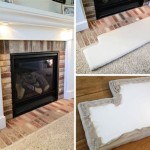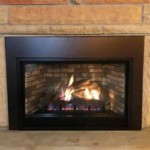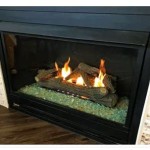Faux Rock Fireplace Ideas: Achieving Natural Aesthetics Without the Quarry
Faux rock fireplaces offer a compelling alternative to natural stone, providing the visual appeal of a rustic or modern fireplace without the weight, cost, or installation complexity associated with genuine rock. The use of manufactured materials allows for greater design versatility, controlled color palettes, and ease of integration within existing architectural structures. This article explores various faux rock fireplace ideas, delving into material options, design considerations, and installation techniques.
The primary advantage of faux rock is its reduced weight. Natural stone can impose significant structural demands, often requiring reinforcement of the floor and supporting walls. Faux rock, typically made from lightweight concrete, polyurethane, or other composite materials, minimizes these requirements, making it suitable for a wider range of homes and building designs. This weight reduction also translates to easier handling and installation, potentially lowering labor costs.
Another key benefit is the consistency and predictability of the material. Natural stone can vary significantly in color, texture, and size, making it challenging to achieve a uniform look. Faux rock is manufactured to precise specifications, ensuring a consistent appearance across the entire fireplace surround. This consistency is particularly valuable for modern designs that prioritize clean lines and a minimalist aesthetic.
Material Options for Faux Rock Fireplaces
The market offers a diverse array of faux rock materials, each with its own characteristics, advantages, and disadvantages. Selecting the appropriate material is crucial for achieving the desired aesthetic and ensuring the longevity of the fireplace surround.
One common option is manufactured stone veneer (MSV), which is made from a lightweight concrete mixture. MSV is cast in molds that replicate the appearance of natural stone, and it can be colored to match a wide range of stone types, including river rock, stacked stone, and fieldstone. MSV is relatively durable, fire-resistant, and can withstand exposure to the elements, making it suitable for both indoor and outdoor fireplaces.
Polyurethane faux rock is another alternative. This material is even lighter than MSV, making it particularly well-suited for applications where weight is a significant concern. Polyurethane faux rock is typically more affordable than MSV, but it may not be as durable or fire-resistant. It is important to select a polyurethane product that is specifically designed for fireplace surrounds and that meets relevant fire safety standards.
Fiberglass reinforced polymer (FRP) is a less common but potentially viable option. FRP is a strong, lightweight material that can be molded into complex shapes and textures. It is also resistant to moisture and corrosion, making it suitable for humid environments. FRP can be more expensive than MSV or polyurethane, but it offers a unique combination of strength, durability, and design flexibility.
Finally, some manufacturers offer faux rock panels made from a combination of materials, such as a polystyrene core with a durable outer coating. These panels are typically lightweight and easy to install, but they may not provide the same level of realism or durability as MSV or FRP.
When selecting a faux rock material, it is essential to consider its fire resistance rating. The material should be tested and certified to meet local building codes and safety standards for fireplace surrounds. Consult with a qualified contractor or building inspector to ensure compliance.
Design Considerations for Faux Rock Fireplaces
The design of a faux rock fireplace should complement the overall style of the room and the architectural features of the house. Careful consideration should be given to the size, shape, and color of the faux rock, as well as the placement of the fireplace within the room.
For a rustic or traditional look, consider using faux rock that resembles natural stone, such as river rock or fieldstone. These materials typically have irregular shapes and textures, creating a sense of ruggedness and authenticity. The color palette should be earthy and natural, with shades of brown, gray, and beige. A large, imposing fireplace surround can be particularly effective in a room with high ceilings and a spacious floor plan.
For a modern or contemporary look, consider using faux rock that has a more uniform appearance, such as stacked stone or ledgestone. These materials typically have clean lines and a minimalist aesthetic. The color palette can be more varied, with options ranging from stark white to deep charcoal gray. A smaller, more streamlined fireplace surround can be more appropriate for a modern room.
The placement of the fireplace is also an important consideration. A fireplace that is centered on a wall can create a focal point for the room, while a fireplace that is tucked into a corner can save space and create a cozy atmosphere. It is important to consider the location of windows, doors, and other architectural features when determining the placement of the fireplace.
The design should also account for the type of firebox that will be used. A gas fireplace typically requires less clearance than a wood-burning fireplace, which can affect the size and shape of the fireplace surround. The design should also incorporate any necessary venting or flue systems.
Lighting is another key aspect of fireplace design. Consider incorporating recessed lighting, spotlights, or pendant lights to highlight the texture and color of the faux rock. The lighting should be carefully positioned to avoid glare and to create a warm and inviting atmosphere.
Installation Techniques for Faux Rock Fireplaces
The installation of a faux rock fireplace requires careful planning and execution. While some homeowners may be able to handle the installation themselves, it is generally recommended to hire a qualified contractor with experience in working with faux rock materials.
The first step is to prepare the wall surface. The wall should be clean, dry, and structurally sound. Any existing paint, wallpaper, or other coverings should be removed. If the wall is not perfectly level, it may need to be shimmed or leveled before installing the faux rock.
Next, apply a layer of mortar or adhesive to the back of the faux rock panels. The type of mortar or adhesive will depend on the type of faux rock being used and the substrate to which it is being applied. Follow the manufacturer's instructions carefully to ensure proper adhesion.
Press the faux rock panels firmly against the wall, ensuring that they are level and plumb. Use spacers to maintain consistent joint widths. Remove any excess mortar or adhesive that squeezes out between the panels.
After the mortar or adhesive has dried, apply grout to the joints between the panels. The color of the grout should complement the color of the faux rock. Use a grout float to force the grout into the joints and then wipe away any excess grout with a damp sponge.
Finally, seal the faux rock surface with a sealant that is specifically designed for use with the material. The sealant will help to protect the faux rock from moisture, dirt, and stains.
When working with manufactured stone veneer, it is crucial to follow the manufacturer's guidelines for cutting and shaping the stone. Using a wet saw with a diamond blade is often recommended for achieving clean, precise cuts. Safety glasses and gloves should be worn during the cutting process to protect against flying debris.
Proper ventilation is paramount when installing a fireplace, whether it uses natural or faux rock. Ensure the firebox is correctly installed and vented according to local building codes and manufacturer specifications. Poor ventilation can lead to carbon monoxide buildup and other hazards.
Regular maintenance is important to keep a faux rock fireplace looking its best. Clean the surface regularly with a mild soap and water solution. Avoid using harsh chemicals or abrasive cleaners, as these can damage the faux rock. Inspect the grout and sealant periodically and reapply as needed.

Stone Fireplace Design And Remodel

Jerre S Faux Stone Fireplace Surround Genstone

43 Top Fireplace Interior Design Stacked Stone Fireplaces Faux Veneer

Stone Fireplace Design And Remodel

Stone Fireplace Electric Faux Mantle Decor Veneer Fireplaces Mantel Wall

Stone Fireplace Makeover Part 2 Faux Whitewash Organized Ish

Faux Stone For Fireplaces

50 Sensational Stone Fireplaces To Warm Your Senses

Diy Faux Stone Fireplace Surround Installation Barron Designs

How To Install Faux Stone Veneer Lowe S
Related Posts








